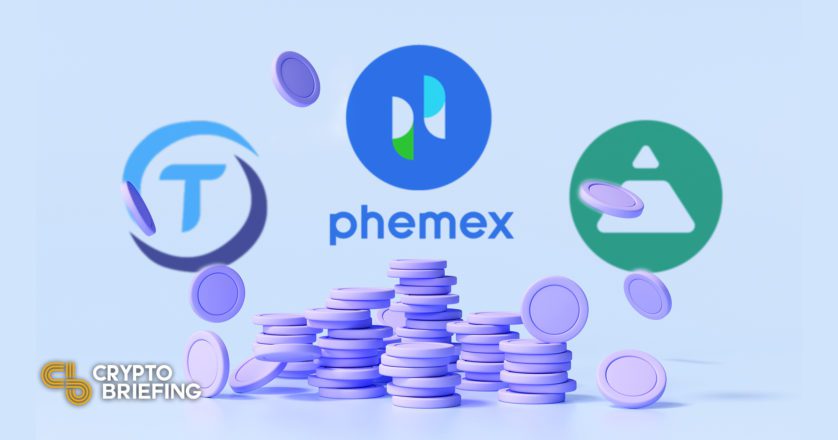Stablecoins, Connecting Crypto and Fiat
Stablecoins can be designed in many different ways to allow them to maintain parity with fiat currencies.

Key Takeaways
- Stablecoins’ high market cap demonstrates their importance to the broader crypto market.
- Due to their low volatility, stablecoins are useful as a form of collateral or for settling trades.
- Phemex recently added multiple new trading pairs to its platform. The new pairs focus on DeFi ecosystems.
Share this article
Stablecoins reinforce the connection between traditional finance and crypto markets. This is because borrowing, lending, and trading all need a stable base value.
Stablecoins are a type of cryptocurrency that track the price of another asset, such as a fiat-based currency. There are different mechanisms that allow stablecoins to attach their value to the value of traditional currencies.
Helping Decrease Volatility
Stablecoin supply exploded in 2021 and continues to grow as new participants enter the space. According to Bloomberg, in Feb. 2022, the total market cap of stablecoins was sitting close to $180 billion. To add context, only BTC and ETH have bigger market caps. Two out of the top 10 coins in crypto by market cap are stablecoins. This is a sign of their relevance in the industry.
Stablecoins are essential for several reasons. Predominantly, they’re used as a form of collateral for borrowing crypto assets, and also as a tool to settle trades. In addition, stablecoins help delay taxable events by not having to sell crypto for fiat currency.
As a form of collateral, whenever users deposit a stablecoin in a borrowing and lending platform, they receive a token representing the deposit position.
Using stablecoins for this purpose is beneficial because stablecoins can have extremely low liquidation ratios due to their price stability. This means that users do not have to risk losing their collateral due to market volatility.
As a tool to settle trades, stablecoins allow traders to go in and out of their positions without withdrawing their funds or returning to fiat. Traders don’t have to wait between trades and can mitigate the risks of price fluctuations by keeping their profits in a dollar-pegged asset.
Although Tether’s USDT is responsible for over 60% of the total market cap for stablecoins and is the most used stablecoin, there are other competing stablecoins worth mentioning. One can learn about different design mechanisms of how various stablecoins are issued and how they retain parity with a stable value.
Phemex is excited to announce that part of this variety of stablecoins is now available for trading on its platform. Phemex added stablecoins such as FEI, TUSD, USDP, DAI and PAXG.
And, as the number of available stablecoins in the market expands, it’s important to dig further into how these coins can achieve a stable peg. We are going to briefly touch on FEI and TUSD.
FEI is an algorithmic stablecoin which attempts to avoid the regulatory risks and single points of failure of fiat collateralized stablecoins. FEI also tries to solve scalability issues typical of crypto collateralized stablecoins like DAI.
The Fei protocol uses an innovative system to maintain its peg and try to guarantee the stability of the protocol.
When the price of FEI is above $1, the protocol allows users to mint new FEI directly from the system at a discounted price, using ETH as a payment. Traders may then arbitrage the price down until the price reaches its $1 peg. When the price of FEI is below $1, through selling the token, the protocol shrinks the supply of FEI. In other words, (by design of the protocol) FEI sellers will trigger removing FEI from the existing supply, and award extra FEI to buyers (on top of their initial purchase). The trading algorithm ensures that the burn amount exceeds the amount that buyers would receive.
This system of regulating supply, while at the same time achieving price stability, is known as a bonding curve sale. The curve in this case approaches and fixes at the one dollar peg.
FEI Protocol uses Protocol Controlled Value (PCV), a subset of the TVL (Total Value Locked) concept. When Fei (the protocol) purchases ETH from users with newly minted FEI, that ETH is used to support the PCV pools.
PCV gives the protocol more flexibility to engage in activities that are not profit-oriented. These activities can align with more fundamental goals, such as maintaining stability in the peg. Examples of PCV features are treasury governance, insurance funds, and a price backstop for DeFi users.
On the other hand we have TUSD (TrueUSD), a centralized fiat-backed stablecoin. Every TUSD is backed by a U.S. dollar held in reserve. Users can mint TUSD and redeem USD at a 1:1 ratio on the TrueUSD website at any given time.
In the secondary market, the price of TUSD can lightly fluctuate based on the market supply-demand ratio. Arbitrageurs can take advantage of these fluctuations by buying TUSD once it falls below its peg and exchanging it for 1 USD on the TrueUSD website.
Both FEI and TUSD are part of the new spot trading pairs Phemex listed on March 14th, 2022.
This quarter, Phemex’s main business focus is to increase its listing capability (adding to its existing 142+ spot trading pairs) to prepare for another exciting DeFi season and to grant more popular tokens for customers to trade.
The new token listings are:
DAI, CVX, AMP, SPELL, TEL, FEI, FXS, TRIBE, RGT, WBTC, TUSD, USDP, RSR, POLY, UMA, DAO, BNB, CAKE, CRV, LRC, 1INCH, BNT, ZRX, PERP, C98 and KNC.
Before adding any new assets to its platform, Phemex performs due diligence by doing extensive research on trading volumes, the popularity of tokens and projects, and the demands of its community.
To prepare for the new DeFi season and learn different trading strategies without risking your own capital, visit the Phemex Crypto Simulation Trading platform for more information.
Share this article
